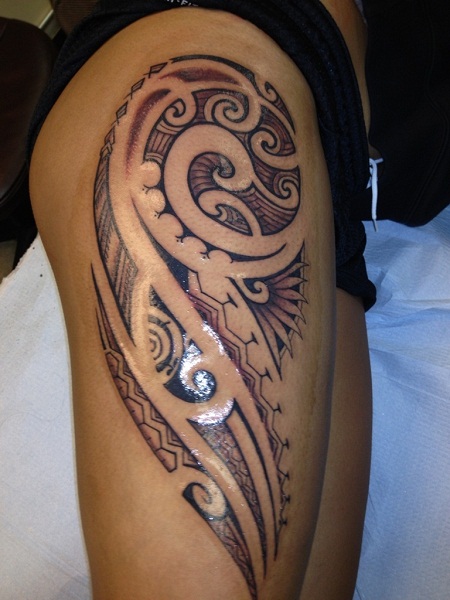
According to Lindsay, the tattoo was placed on the hand. We do not know what official sign was placed on the legionary’s body however, we can guess that it was an eagle or a symbol of a legion or a unit.

In his treatise Epitoma Rei militaris he mentions that the recruitment to a Roman army should begin with testing the strength, then assigned to the unit and later tattooing with a unit sign 2. Confirmation of this state of affairs is the work of Vegetius – writer and Roman historian living in the second half of the fourth century CE. Such a thesis was made by the antiquity expert Lindsay Allason-Jones. For example, probably all legionaries and some auxiliary troops ( auxilia) who served on Hadrian’s wall had tattoos. It is possible that tattoos also appeared in the Roman army. In turn, Suetonius, a Roman writer from the 1st century CE, wrote that some of the well-born citizens were marked on the order of emperor Caligula – so-called stigmatum notis) – “Many men of honourable rank were first disfigured with the marks of branding-irons and then condemned to the mines, to work at building roads, or to be thrown to the wild beasts or else he shut them up in cages on all fours, like animals, or had them sawn asunder” Caligula, 27" data-footid="1">1. Plato mentioned that those guilty of sacrilege should be tattooed and exiled from the state.

Many Greek and Roman authors mention tattooing the body as punishment. The Romans described the tattoo as stigma. In late Roman times, when the Imperial army consisted mainly of mercenaries, it was decided to tattoo them so that it was easy to recognize deserters. The custom of tattooing Romans took over from the Greeks. They used tattoos to mark slaves and criminals, in case they tried to escape.

The custom among Greeks to tattoo bodies came from the Persians.
#MARKED SOCIETY TATTOO FULL#
“There’s a lot of gossip about celebrities who have tattoos today, but it was happening in the 19th Century, the newspapers were full of stories about who had tattoos – it’s not a new phenomenon.Body tattooing usually in the Roman or Greek world was associated with the barbarians and their mysterious cults. “It was quite fashionable until World War II,” says Kumschick. The British tattooist worked on members of European royalty, including King Alfonso XIII of Spain, King Frederick IX of Denmark and King George V of England. There are few photos of the upper-class tattoos – although the exhibition features a documentary showing two women being inked by George Burchett. Other tattooed circus performers included Lady Viola, who sported portraits of presidents Woodrow Wilson, George Washington and Abraham Lincoln on her chest, and Artoria Gibbons, who had one tattoo showing a section of Botticelli’s Annunciation and another depicting part of Michelangelo’s Holy Family. “In the 19th Century, women in circuses and aristocratic women were tattooed at the same time, but the society ladies didn’t show them, there are no photos of them.” This photo shows Maud Stevens Wagner, an American tightrope walker and contortionist who was the first well-known female tattooist in the West.

Because of shifting social attitudes, some people hide their tattoos while others are quick to reveal them.


 0 kommentar(er)
0 kommentar(er)
